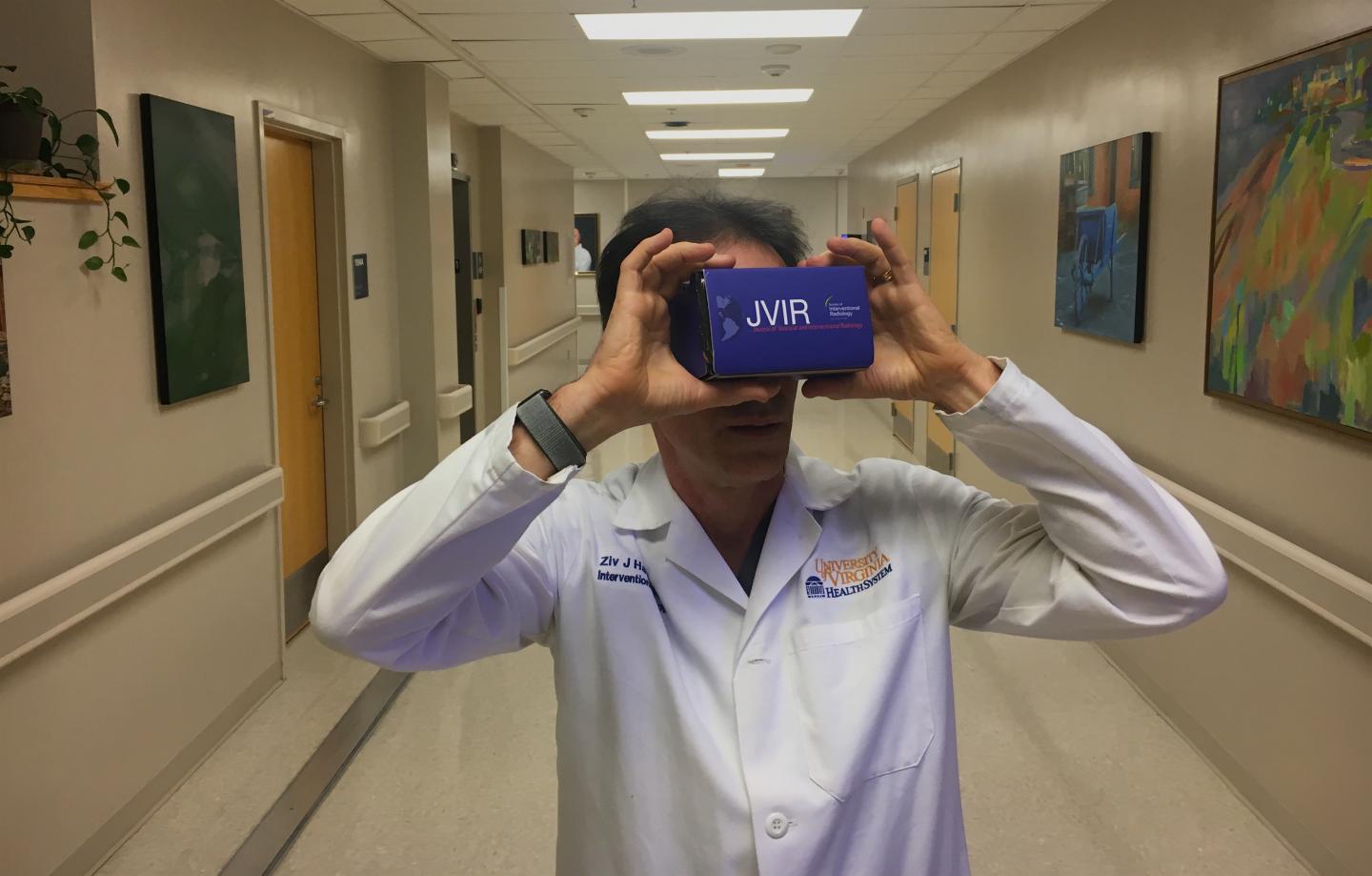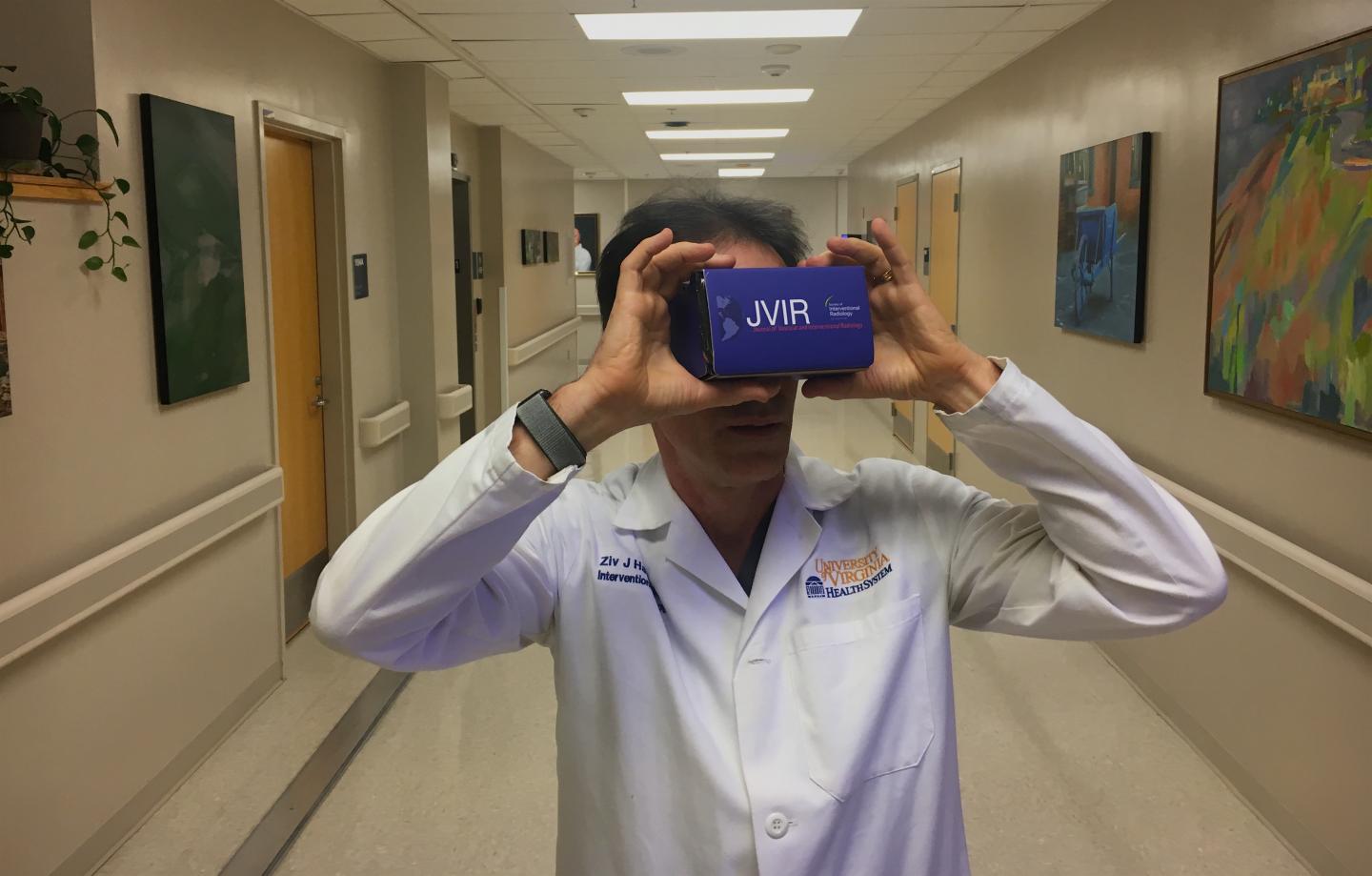
Credit: Josh Barney | UVA Health System
Physicians, trainees and even laypeople can now experience what it's like inside the operating room as an expert radiologist performs one of the most difficult medical procedures of its kind.
Ziv Haskal, MD, of the University of Virginia Health System, has created a dramatic teaching tool using the power of virtual reality. Whether watched on a high-end VR system or a $15 cardboard viewer, Haskal's virtual procedure puts the viewer right in the operating room with him as he creates a new blood vessel through a small nick in a patient's neck.
It's a complicated procedure – Haskal calls it an "interventional radiology heptathlon" – and his use of VR is set to transform how it is taught. "The current means of teaching is a physical person has to arrive … and go over with the doc beforehand. Or they have to look at a lousy 2D animation on a screen," Haskal said. "Once you put [VR] glasses on people, it's like you walk them through a completely different door."
IR in VR
From inside the VR goggles, viewers can look around in 360 degrees as the procedure, known as a transjugular intrahepatic portosystemic shunt, unfolds around them. Haskal guides them step-by-step through the entire procedure, and strategic use of picture-in-picture lets the viewer see both what Haskal is doing and what he is seeing.
Haskal designed the VR experience as a teaching tool for physicians and trainees, but he can foresee many other game-changing applications. VR might be used to show a patient what to expect during a procedure, to teach a nursing student what must be kept sterile in an operating room or to provide a refresher for physicians who have not performed the procedure recently.
"Watching it in a 2D animation, listening to a lecture, watching a physician on a video simply fails to convey the subtleties of the procedure," Haskal said. "We're putting the viewer in the actual environment, where they can return again and again."
Lifting the Curtain
Haskal is set to unveil the VR tool in dramatic fashion this weekend, when he plans to ask approximately 200 attendees at the SIR 2018 Scientific Meeting in Los Angeles to don VR goggles simultaneously and step into the operating room with him. "Culmination of eons of work," he recently tweeted. "Blow your mind/See the future."
After the unveiling, Haskal will make the VR publicly available to everyone, for free, on the Journal of Vascular and Interventional Radiology website. (Video clips from the VR video can't do it justice, but to get a sneak peak at what it's like, visit UVA's Making of Medicine medical research blog at http://makingofmedicine.virginia.edu.)
Ultimately, Haskal hopes to create many more virtual-reality teaching tools for healthcare professionals. "With this approach," he said, "doctors are simply going to be able to do things better."
###
Media Contact
Josh Barney
[email protected]
434-906-8864
http://www.healthsystem.virginia.edu/home.html
Original Source
http://newsroom.uvahealth.com/2018/03/13/uva-doctor-harnesses-virtual-reality-powerful-teaching-tool/





